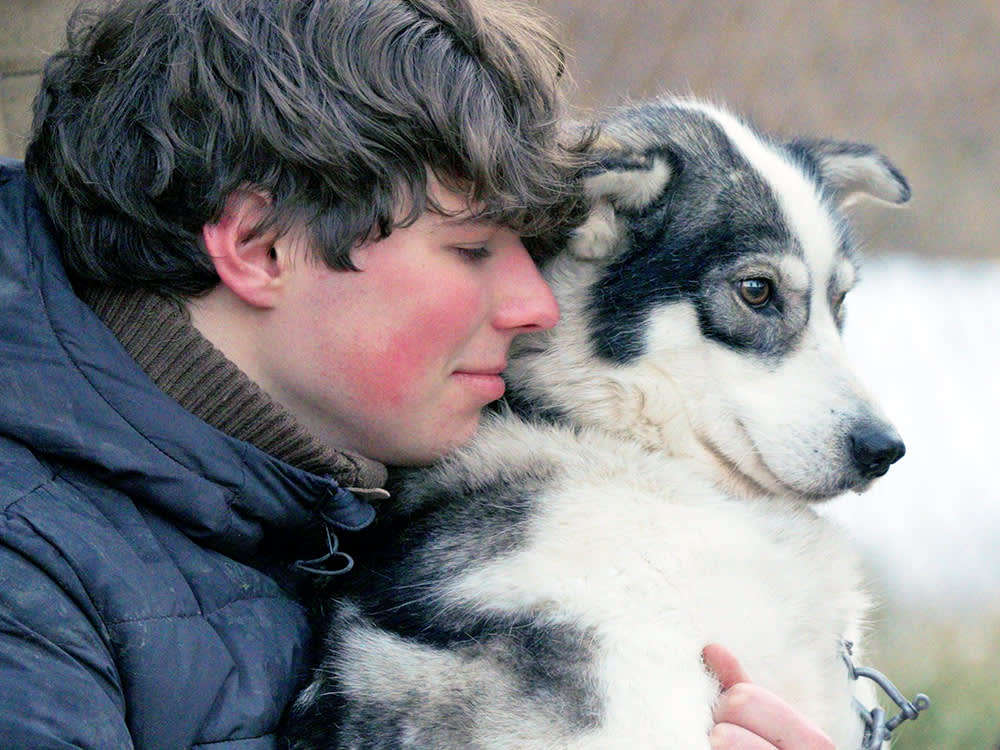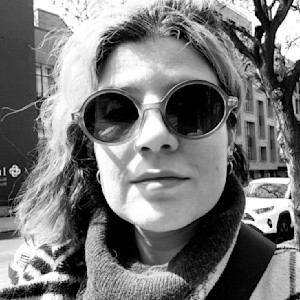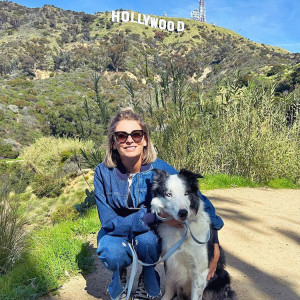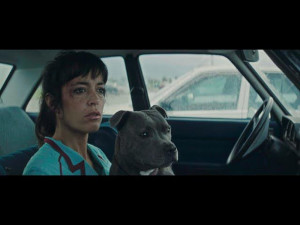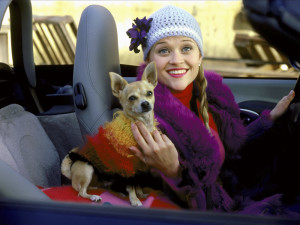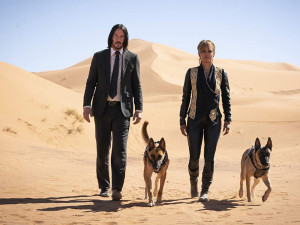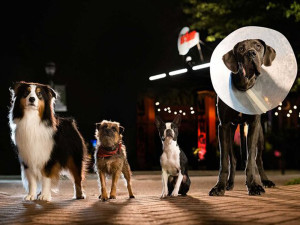In Folktales, Watch Teens Ditch Their Phones for a Team of Sled Dogs
The documentary, out this weekend, follows a group of Gen Z students as they look after 40 dogs in the wilderness.
It’s a cliché as old as domestication: Dogs are man’s best friend. But what does that actually mean? In their new documentaryopens in new tab, Folktales, directors Heidi Ewing and Rachel Grady follow a pack of Gen Z students into the arctic to find out.
Strictly speaking, Folktales isn’t just about the connection between humans and dogs, but the canine protagonists do play a crucial role. The coming-of-age documentary, which hits theaters on July 25, takes place at Pasvik Folk High School in Norway, where teens ditch their smartphones and learn self-reliance by developing survival skills... including dog sledding.
Save on the litter with color-changing tech that helps you better care for your cat.
The program lasts for nine months, during which students take classes and participate in mandatory outdoor activities like dog sledding and overnight camping in the snow. The students bond with the dogs throughout the program. Pasvik targets teens seeking a gap year to develop independence before breaking into adult life, and as any dog parent might guess, the 40 hounds on Pasvik’s premises help open their hearts and strengthen their sense of self.
The film’s co-directors first learned about folk high schools through a memoir calledopens in new tab Welcome to the Goddamn Ice Cube: Chasing Fear and Finding Home in the Great White North by female dog sledder Blair Bravermanopens in new tab, who attended a folk high school herself.
Speaking with Kinship, Grady admits, “It sounded like it was too good to be true for high school students to be learning how to be brave by learning how to dog sled.” But lo and behold, these schools are still in operation, and the otherworldly background provided the perfect backdrop for deep, contemplative storytelling.
Folktales weaves an enchanting narrative. The film captures its young, human subjects with warmth and empathy as they struggle with their new surroundings, interweaving their experiences with wisdom drawn from Norse mythology. Grady and Ewing couldn’t know in advance who the students would be, so they settled on Pasvik because of the faculty — fascinating characters and good storytellers who also struck them as good people. Equally important, however, were the dogs.
“They’re the best ever,” Grady says. “So, we threw the dice, and we ended up at the edge of the world.” Below, we speak with Grady about the process of making this film — why dog parents (and dog lovers!) need to run to their local theaters to see it this weekend.
The following interview has been lightly edited and condensed for clarity.
Did anything surprise you about Pasvik Folk High School and the dogs when you first arrived?
What surprised me right from the beginning, and that’s why I didn’t feel like these schools could exist, is it feels like an old-fashioned idea that you should have this opportunity to do something that just helps you build character and find what your purpose is, and it’s not to learn something in order to get a degree or make money. There’s nothing else to it. It’s just about getting deeper inside yourself and building your character.
Right from the beginning, I was like, “We would never have that in this country.” It is very affordable. Everyone goes. It’s not for wealthy kids. They also have free college there, so they have a lot of options. They’re living everyone's best life. So just the fact that they even existed was like, “How is that still something that could survive in this grind of a universe?”
So, right from the beginning, we were surprised. When you’re doing an observational movie, and you’re sitting around and you’re waiting, you’re patient, these moments of grace happen for your eyes, and they’re always a thrill, and it’s always a surprise.
There’s a great line in the movie about how dogs open something up in people. What did you see the students learning from these dogs?
I’m also a dog owner, and I think everyone with a dog has this, but these students were taking care of 40 dogs, which means it’s not about you. You have to show up, because this animal is relying on you to feed it, to make sure that it’s healthy, to check its body and make sure its claws are okay. It doesn’t matter if you’re tired; it doesn’t matter if it’s cold out. You have to go do it because they’re counting on you. I think there’s something about that that’s just incredibly healthy for one’s ego, you know?
Overall, the biggest takeaway was, you have to check some of your self-absorbed selfishness at the door, because dogs look at you, and they need you. As [one of the Pasvik instructors] Iselin said many times, they give you so much. They look at you like you’re their favorite thing in the whole world, and they see you, and they start wagging their tail. No one ever does that. Humans don’t do that. So you’re getting a lot out of it, and the thing you learn is you have to give it back.
A running theme in this movie is our disconnection from nature and wildlife, and how much we change when we tune into those things. What do you think humans can learn from dogs and their connection with nature?
Dogs live in the moment, 100 percent. They are present, and they are there, and that is their gift.
I believe that dogs are the best thing about humans. They really bring out the best in humans. The most we have to offer other people, dogs bring out in us. I’m obsessed with my dog. My dog is my best friend ... and I have a lovely husband and a son that I adore, but when I’m away for two weeks, I think about my dog every day.
Especially as a dog person, did anything surprise you about the human-dog relationships you witnessed?
The downside of having an animal that you love like a family member is they don’t live that long. And in a place that’s got 40 dogs, it happens all the time. For the teachers, especially ... they know these dogs, and they train them, and they’re really close with these dogs, they have to deal with one or two or three dogs dying every year. It’s the cycle of life.
As someone that has one dog at a time, that is something to consider if you’re going to be spending your life doing it, because it’s hard. It’s heartbreaking. But you have to really accept that that is the cycle of life. It just reminds you how precious relationships are, and those good moments, and the bonding. You really have to savor it, because it goes away.
In the film, one of the students, Hege, finds out that one of the dogs she’s bonded most closely with is sick with cancer and eventually has to say goodbye. Was that a difficult moment to film?
That was obviously a surprise, and very sad. It happens to the person that had lost their dad, and she didn’t get to say goodbye to him because he died in a sudden way. It wasn’t like he was sick; he was murdered, so he left, and she never saw him again. That kind of grief, it’s brutal. It breaks something inside of you. And then, when she had this dog that was sick, she could say goodbye. I think it was very profound for her.
Now, of course, we didn’t know any of this was going to happen. But again, it’s one of those things where you see something that’s very, very profound, because she was able to kind of work out her grief.
How challenging is it to film dogs? Are they difficult subjects to capture?
Well, it’s funny. The dogs are easy. I honestly never want to make a film about humans ever again. Dogs are great. Gen Z was 1,000 times more complicated and hard to film — people that have been filming themselves since they were born and are control freaks over their image, rightfully so. They’ve been doing it their whole life, and it's really hard for them to give up that control. Dogs don’t care.
What’s hard is filming dog sledding. We had to learn the hard way, which means we had to do it 50 times in all different kinds of ways — with different cameras, with different mounts, with different everything. We’d keep experimenting, and then, from all of that, we were able to have enough to make a movie, but that's about it.
Is mushing as hard as it looks?
I think it is, yeah. But what is surprising is, it’s not very fast. They’re dogs. They run, but they’re not running 40 miles an hour. They’re running, like, 12 miles an hour. It’s hard to navigate, and it’s slippery, and people fall, and dogs get tired, and you stop, and then one of them will stop, and then you fall off the sled. I saw them have all those kinds of issues, but it’s, like, in slow motion.
Without having done it, the directional aspect is mind-boggling. The level of connection there has to be between the musher and the team.
It’s really interesting how they make up a team. It's not the same team over and over. You change it around all the time. You have to have different dogs next to each other, because one gets distracted but is really strong. This one will yip at them or bite their heels. They know their personalities, and you are literally building a team like you would with humans.
As you mentioned, this was such a surreal experience and setting for you and Heidi to immerse yourselves in. Did this experience transform you in any way?
Oh, definitely. It was kind of like life imitating art, because we were filming these kids who were doing something really hard, and we were doing something really hard in order to film that. Just the constant challenge and testing ourselves and running around after teenagers at 30 degrees Fahrenheit below.
That was one level of something I took away from it, but also just the stunning nature. There’s no sound pollution, and there’s no light pollution. So just being in a place that’s inky black, that quiet, and then the snow absorbs everything else, so it’s kind of like a sound blanket, and so you really feel enveloped. It’s fast and cold, but also kind of cozy in that way.
I’ve been in cities my whole life, and I did not really understand what that does to your central nervous system until I wasn’t here or anywhere that was familiar to me. My body was like, What was that? What was that life you're having? That’ll always stick with me.
